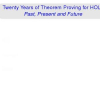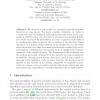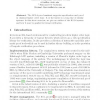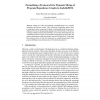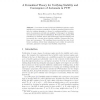TPHOL
2008
IEEE
14 years 6 months ago
2008
IEEE
When reasoning about inductively defined predicates, such as typing judgements or reduction relations, proofs are often done by inversion, that is by a case analysis on the last r...
TPHOL
2008
IEEE
14 years 6 months ago
2008
IEEE
Systems that can immediately react to their inputs may suffer from cyclic dependencies between their actions and the corresponding trigger conditions. For this reason, causality an...
TPHOL
2008
IEEE
14 years 6 months ago
2008
IEEE
TPHOL
2008
IEEE
14 years 6 months ago
2008
IEEE
We describe a new method to represent (partial) recursive functions in type theory. For every recursive definition, we define a co-inductive type of prophecies that characterises...
TPHOL
2008
IEEE
14 years 6 months ago
2008
IEEE
The HOL4 proof assistant supports specification and proof in classical higher order logic. It is the latest in a long line of similar systems. In this short overview, we give an o...
TPHOL
2008
IEEE
14 years 6 months ago
2008
IEEE
Slicing is a widely-used technique with applications in e.g. compiler technology and software security. Thus verification of algorithms in these areas is often based on the correc...
TPHOL
2008
IEEE
14 years 6 months ago
2008
IEEE
We describe a tutorial that demonstrates the use of the ACL2 theorem prover. We have three goals: to enable a motivated reader to start on a path towards effective use of ACL2; to...
TPHOL
2008
IEEE
14 years 6 months ago
2008
IEEE
Abstract. Type Classes have met a large success in Haskell and Isabelle, as a solution for sharing notations by overloading and for specith abstract structures by quantification o...
TPHOL
2008
IEEE
14 years 6 months ago
2008
IEEE
We present a novel compiled approach to Normalization by Evaluation (NBE) for ML-like languages. It supports efficient normalization of open λ-terms w.r.t. β-reduction and rewrit...
TPHOL
2008
IEEE
14 years 6 months ago
2008
IEEE
Correctness of many hybrid and distributed systems require stability and convergence guarantees. Unlike the standard induction principle for verifying invariance, a theory for veri...

